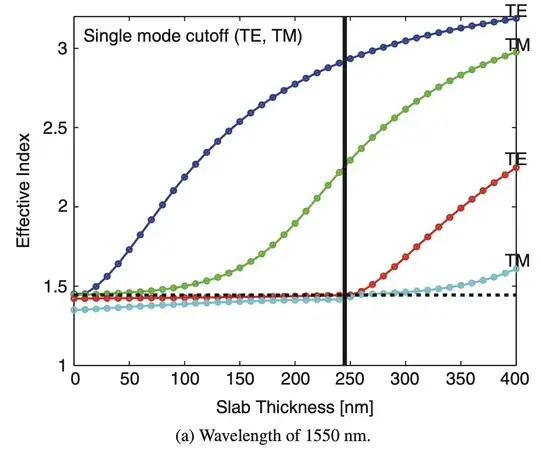I recently started learning about silicon photonics, focusing on its usage in the high-speed interconnect. Most papers I've been reading so far use optical waveguides choosing TE00 as the dominant mode, and I have not seen any papers or references choosing TM00 as its dominant mode.
For instance, attached is the snapshot from "Silicon Photonics Design from Devices to Systems" by Lukas Chrostowski.

In this figure, if we choose slab thickness of ~240 nm, we can see that two main modes exist, TE00 and TM00, and TE00 has a higher effective refractive index (ERI) than the TM00 mode. I understand that the ERI can vary depending on the geometry of the waveguide. Still, even so, the author chooses TE00 as the dominant mode for every single example throughout the book. This is just a tip of the iceberg. As mentioned above, every reference I've been reading uses TE00 as the dominant mode without detailed explanations.
In summary, I have the following questions: Q1: Researchers often choose TE00 as the dominant propagation mode due to its high ERI. My first question is, what is the advantage of having an ERI? Is it related to slowing down the propagation velocity? If so, what is the benefit of slowing down the propagation velocity?
Q2: If it is not due to the ERI, what is the advantage of choosing TE00 over TM00?
I would appreciate any reasonable explanations for my question.